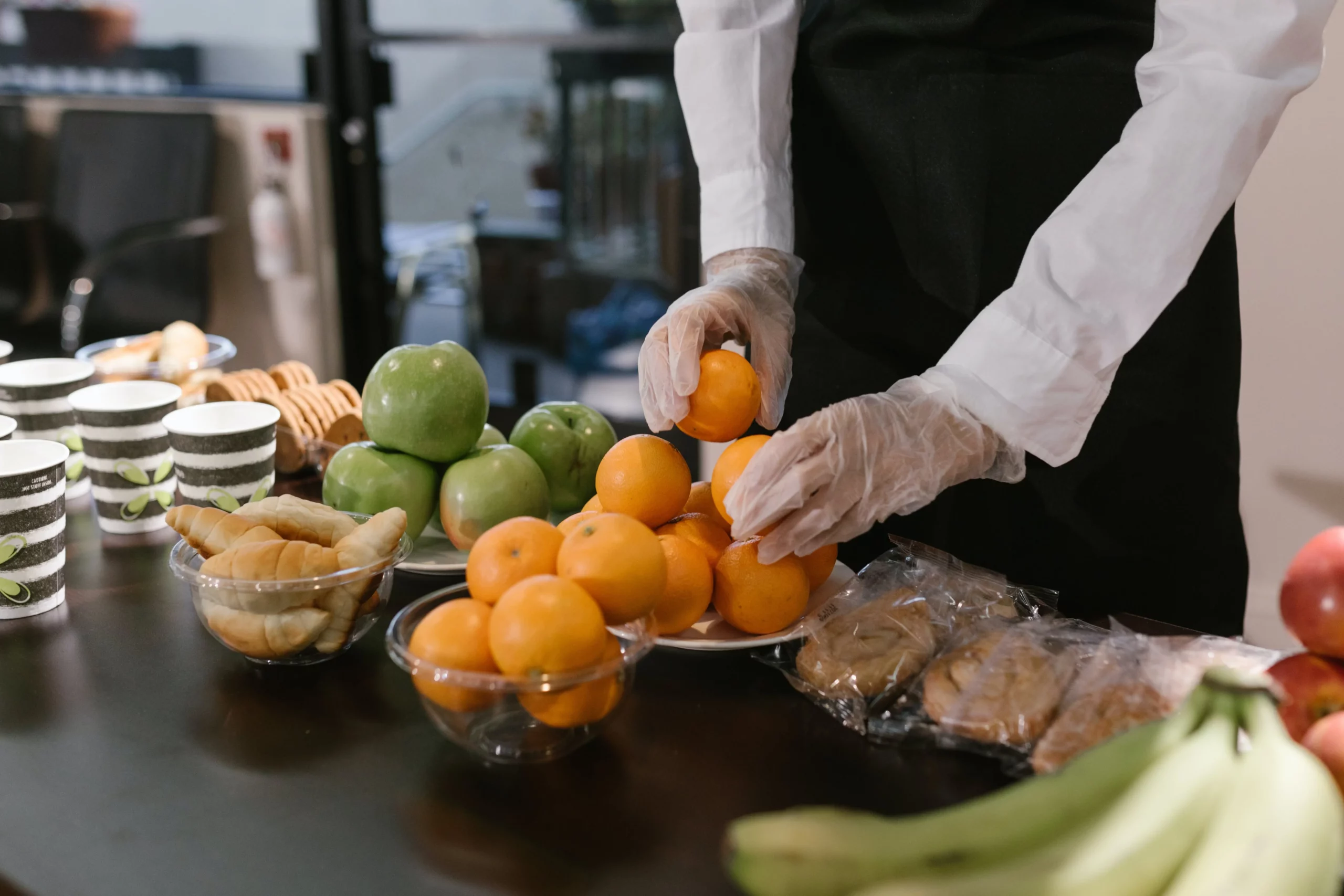An essential tool for any restaurant owner looking to develop a successful business revolves around the crafting of a restaurant operations manual.
The instructed process a manual provides helps exceed and maintain operating procedures. A restaurant manual includes procedures that you and your staff should follow to keep your restaurant running efficiently. Also, it provides comprehensive information that covers important guidelines for safety, which is critical in an industry with strict health and safety guidelines.
What Is a Restaurant Operations Manual and Why Is It Important?
It’s clear that a restaurant training manual can benefit the business in a variety of ways, often by saving time and money through clarifying employee duties to standardizing open and closing procedures. In addition, a restaurant SOP (standard operating procedure) outlines how to carry out operations correctly and consistently. These SOPs should be accessible at the place of work for maximum effectiveness.
What Are the Steps to Outlining a Restaurant SOP?
There are certain steps provided in an effective restaurant operation manual, which serve as a restaurant SOP. In most businesses, the SOP of a restaurant will include the following:
- Title page
- Table of Contents
- Purpose
- Procedures
- Quality Assurance/Quality Control
- References
Similarly, as explained in the restaurant operations outline above, restaurant SOPs will have written lists of rules, standards, and norms that indicate how to complete routine tasks. Moreover, efficient SOPs will ensure that all employees are aware of the safety standards to keep the working conditions clean, proper, and satisfactory to customers.
While a restaurant SOP can cover a wide variety of topics, a restaurant operations manual is specific to the order of operations for that business. In other terms, it is a way to make sure workers stay on task and are aware of their responsibilities, whether that’s front-of-house staff or back-of-house staff duties.
What Does a Restaurant Operations Manual Entail?
A restaurant manual allows all workers to complete tasks consistently and successfully. In fact, there are strategies on how to write an operations manual given steps from a standard and a sample restaurant operations manual:
- Restaurant concept
- Human resources
- Guest Service
- Food preparation and sourcing
- Food safety
- Maintenance and cleaning of areas
- Maintenance and cleaning of equipment
- Employee and customer safety
There are basic aspects to cover in restaurant operations manual writing. Each section should cover the WHY of the process, detailed procedures, and checklists. It should be clear that it is important to execute tasks in the outlined way in order for a restaurant to operate smoothly. With this extra detail and clarification, it is more likely that employees comply with the process and procedures you have outlined. So, what does each section cover? Let’s look closer at what each section covers in detail.
Restaurant Concept:
The restaurant concept must have a mission or an idea of what the hospitality industry wants to accomplish. A restaurant concept statement is a vision that helps create an end product. When making decisions on restaurant operations, it’ll be easier with the support of a restaurant concept statement.
In addition, the restaurant concept needs to describe and reflect every part: food, service, decor, and prices. All of those details added to the concept statement should be thought about and incorporated into the restaurant operations manual.
Human Resources:
Human Resources are a vital function of the restaurant process. This section should begin by outlining the roles and responsibilities human resources is in charge of for a restaurant to operate.
The responsibilities and details of Human Resources in the restaurant operations manual should include:
- Processing restaurant payroll and administering benefits
- Ensuring local, state, and federal regulation compliance
- Creating and communicating HR policies
- Interviewing and hiring employees
- Building a strong restaurant culture
- Leadership training
- Resolving employee conflicts
Depending on the size of the restaurant, the responsibilities of Human Resources and their distribution will vary. Larger chain restaurants have a bigger Human Resources department with separate positions for each responsibility, while on the other hand, small chain restaurants will have one person in Human Resources doing all of the tasks.
Guest Service:
Restaurant service is made to accommodate a welcoming atmosphere for guests with efficient operations. A lot of the responsibilities guest service works to satisfy are courtesy and making sure customers are taken care of, which helps create loyal customers. Similarly, those details should be present when implementing the guest service section in the restaurant manual.
There are sequences that workers should be made aware of in the manual that reference these duties, including, but not limited to:
- Handling reservations
- Welcoming guests
- Seating guests
- Pour Water when guests are seated
- Appropriate order-taking
- Service of food and beverage orders
- Clearance of plates
- Cleaning table before dessert
- Dessert order is taken
- Present Check
- Guest feedback
- Farewell
In other words, all employees that reference the manual for guest services should find it easy to follow. Guest service is essential if you want customers to come back. Similarly, all guest service procedures should be completely and comprehensively addressed. Especially here, it is clear that restaurant operations manuals are critical for the short- and long-term success of a restaurant.
Food Preparation/Food Safety:
This section ensures that all customers are safe from foodborne illnesses and that customers are willing to come back to the restaurant again for more. The food preparation and safety tips should refer to proper practices for preparing and storing food. All tips should be made clear in accordance with the food safety guidelines.

- Wash hands often
- Sanitize surfaces
- Wash fruits and vegetables
- Avoid cross-contamination
- Prepare and store foods at safe temperatures
- Pay attention to food recalls
While the list above has been simplified, this is not an area to skip over details! Reducing the spread of foodborne illnesses is a major plus, and truthfully a requirement, for a successful restaurant. Make sure the restaurant operations manual covers these issues in food safety and preparation from ingredient purchasing all the way through dishwashing.
Maintenance/Cleaning of Areas and Equipment:
In order to have the best maintenance done for areas and equipment in the restaurant, it needs to be kept up and running. Above all, good quality and well-functioning equipment is a must for a successful business to operate.
In addition, restaurant health and safety guidelines dictate all equipment and areas must be updated and kept clean regularly. The safety and effectiveness of equipment in a workplace depends on the condition of the equipment and if it’s cost-effective. A list of all possible equipment options should be kept when it is time to buy: research should show the chosen equipment is ready to be used.
Moreover, successful equipment and regular efficient cleaning of all areas of the restaurant reduces poor food quality, improves the speed of operations, and diminishes possible fire hazards. Overall, keeping up with your equipment and cleaning in all areas will increase equipment life and lead to a healthy work environment for your employees, and show your best possible presentation to customers. Make sure that the restaurant training manual provides information on the cleanliness and maintenance of equipment and restaurant areas.
Employee and Customer Safety:
In the last section of the training manual, the proper training must be taught and learned to avoid hazardous work conditions. Above all, there must be training procedures that follow safety instructions for all employees in case of a fire and common injuries. Implementing a fire safety procedure is beneficial for an operations manual so that every worker is aware of the emergency plans.
When accidents do happen, it is critical to always have a full emergency supplies kit accessible. Restaurant safety procedures for employees and guests keep everyone safe and informed.
What Does All of This Information Mean for Your Restaurant?
The first step in initializing a restaurant business is to ensure that restaurant standard operating procedures are in place. All of the details and information that the manual suggests are instructions on how every part of the business operates. Without the operations manual, you are missing crucial procedures to keep your business afloat.
Although writing a manual isn’t the most exciting part of developing your business, it’s one of the most important factors in maintaining a smoothly operated restaurant. Always take the time to learn what the restaurant SOPs are so that every employee is on board with their responsibilities.
Conclusion
If you need assistance in writing a restaurant operations manual, seek out the professional writers of Essential Data Corporation who offer numerous services for documentation development and improvement. We attend to all of your business needs and are always willing to lend a hand so that your business runs efficiently. No business succeeds alone!
Whether you need a single technical writer for a brief project or a team of consultants to produce a complete line of documentation, the quality of our work is guaranteed for you. Our clients work closely with an Engagement Manager from one of our 30 local offices for the entire length of your project at no additional cost. Contact us at (800) 221-0093 or [email protected] to get started.
Written by Lucas Van Deventer



